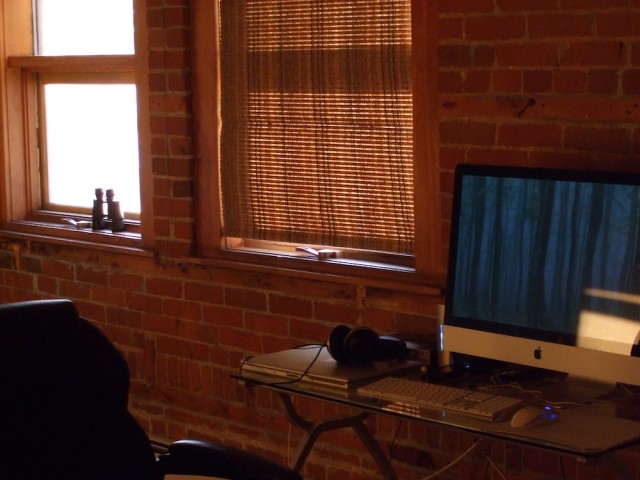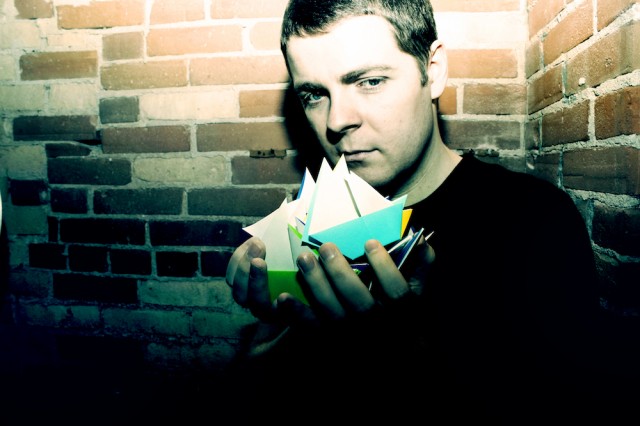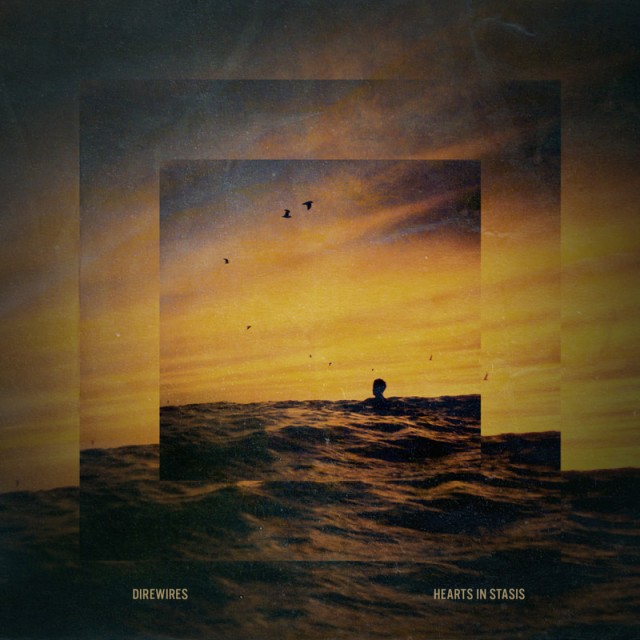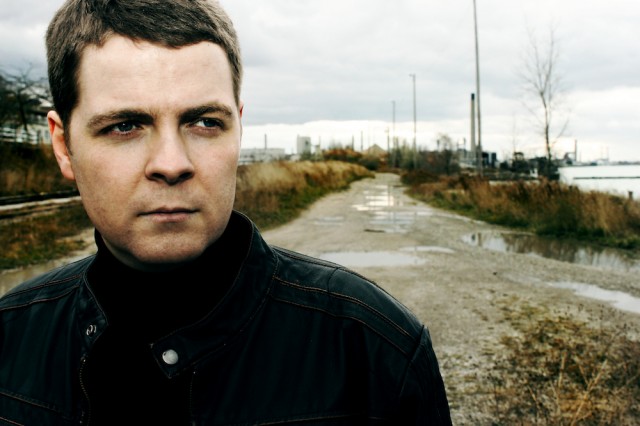Somewhere at the boundaries of “ambient” and “experimental,” there’s a great deal of wonderful music being made these days. Even with great labels behind them, it’s the sonic signature that stands out.
With densely-layered, trance-like loops, “Hearts in Stasis” is a perfect example of this hard-to-categorize immersion for your ears, worth repeated listens for its tightly-packed details. Direwires, aka Adam Young, has been on Moodgadget since the beginning, included on their first compilation. The Ontario-based artist talks to CDM about his approach to music making, and I think it’ll resonate with a lot of artists of a similar mindset. With minimal, software-conceived production and drawing heavily on memory and the sounds around him, Adam says he crafted this record as though manipulating a dream.
You can have a listen to the full release on SoundCloud. Digital downloads on iTunes. There’s also a free MP3:
Direwires – Hearts In Stasis by Moodgadget
Peter: Above all others, there’s a sense of a hypnotic quality to the piece, in these repetitions. What’s the compositional idea behind these? Do you put yourself in a sort of meditative state when working?
Adam: I’ve always loved repetition in music. Repetition gives things weight, and meaning and draws you in, and makes you ask questions rather than taking a recorded idea for granted… sort of forcing you to “live” in it for a short bit. I’d say for this material in particular, it is more about intro/retrospection than meditation or some kind of self-hypnosis. There were many moments in the album where I drew pretty directly from fond and bittersweet memories of my teen years and because they meant so much to me, I wanted to stay there for as long as possible without creating something people couldn’t listen to. It was a pleasant process and it felt a bit like manipulating a dream you were trying really hard to not wake up from.
What’s your technique for working with loops?
There are exceptions to my methods all the time, but typically I’ve either heard naturally-occurring repetition that I really liked or something that I think would be fun to get my hands dirty with and edit into something loopy. I’ve used telephones and telephone messages, portable tape recorders, computers — all sorts of things to capture these things or pull from personal sources. But ultimately I feel most at home doing all of the reconstruction in software. I like the control I have over things on a computer, and it’s how I learned many years ago. Most things you hear have gone through software samplers or received some sort of digital manipulation.
It was a pleasant process and it felt a bit like manipulating a dream you were trying really hard to not wake up from.
There’s a real sense of dense dynamics to the layering here. You talk as well about “lo-fi” sounds here. Can you describe what that meant, how you approached the sound of this record?
I used a lot of analog and digital methods to capture audio from life around me. I did a lot of disregarding of source quality with the mindset that it would only add to the texture of whatever piece I was working on if I treated all things equally in the production process. A poor quality voicemail message was just as valuable to me as a perfect recording of a grand piano. This really helped bring things into perspective without a lot of effort and I was able to focus on the more conscious creative decisions I wanted to be making.
What are the sound sources we’re hearing? It sounds like you’re sampling all kinds of different things and working iteratively with those materials.
Anything that makes a sound is fair game, typically. There are a lot of human voices, but this time around I’ve tried to stick to tangible objects from my life and surroundings, and some synth parts here and there. It’s very personal music and it was important to me and context was crucial, even if the listener can’t hear all of it in a recording. There’s a LOT of different things in there though. You’ll hear everything from traffic and construction sounds to human speech and garage sale guitars. There’s even a couple seconds of a beat up read-along record in there.
Even I think without be influenced by the lovely album art, there is a sense of being underwater in this piece, perhaps because of the ebb and flow of the rhythms and dense layers. There were some natural inspirations, yes?
I’m very fond of aquatic themes and water in general, but it was mostly coincidental in this particular case. Most of the album was inspired by fond memories that just happened to take place in and around water and beaches and the like. I am always inspired by natural surroundings though and it just so happens that I’ve spent most of my life in and around fairly beautiful areas of Canada. The lovely cover art was put together by Alex Koplin at Moodgadget, based on a photo I took while swimming in Lake Huron in my teens.
Moodgadget notes that this album is the product of four years of work. Obviously, some records are produced in days, others years. How do you sort of keep material that has evolved over a longer period of time fresh?
I would like to think that it’s always “fresh” because I didn’t write music for the music people. I wrote songs about things that will always be the same so long as I remember them. I wasn’t chasing after a trending sound or trying to write something for a certain group of people. I was just writing something for me in what was almost a side effect of being someone who spends too much time thinking while sitting around a bunch of studio tools.
Since you’ve been with Moodgadget for some time, how did that relationship come about?
I met the gentlemen involved and their friends at Ghostly some years ago when I was attending parties and trying to make some connections for a couple of techno projects I was a part of at the time. They had been putting on some really cool mixed-genre multimedia shows at the time and eventually formed the label. At one point they were brainstorming by email and talking about their intentions and what they should call it and I suggested the name and they apparently liked it.
Can you share some of your background, and how you approached this musically / technically speaking?
I was always around video games and computers as a child, which gave way to spending too much time hobbying about with computers to the point where I was actively looking for new things I could do with a computer. I eventually discovered the “tracking” scene and some of the things people were doing musically with computers. I started experimenting a little bit at a young age and was writing mediocre techno and ambient things by the time I was twelve. I guess in a lot of ways, not a lot has changes other than I’ve developed some very intentional compositional habits, understand how to write music that flows the way I want it to and how to use the tools I have..which are obviously better tools than I’ve started with.
Most of the songs here were written in similar ways. I’d start with a sound I had recorded, would pull it into a virtual sampler or waveform editor, pull it apart, and start putting it back together in different ways until I had a new sort of “instrument” I could write something musical with. Then I’d start laying out some sort of melody or just ride out a loop I liked and would build something resembling a song around it.
What are you listening to these days? I hesitate to call anything “ambient” as the word has so much associated with it…
That’s a tough one, and I agree. I’ve gone through a lot of different phases but lately it’s all over the place. I’m listening to a lot more traditional music than I used to, bands and stuff. I used to listen to a lot of exclusively electronic things. I have playlists I rotate through for different moods and I guess the ones that see the most play lately are ones that include some folk and things like Grouper, Owen Pallett’s solo work, David Sylvian, Fennesz… I think I have listened to that “Transit” song Sylvian and Fennesz did together about a million times. It kills me every time. Once in awhile I’ll go on a strange bender and spend a week only listening to 80’s New Wave stuff, or something like The Stranglers.
If you asked me several years ago, almost everything I listened to was some form of techno. It’s kind of funny, because when I first began listening to music as a child, I only wanted aggressive, violent sounding metal and rock music around and my father would play Tangerine Dream and all sorts of classic synth music and I would attempt to make fun of him and tell him to put on “real music”. It looks like he gets the last laugh.
Can you describe for us what’s in your studio?
It’s not very impressive to studio nerds, it’s always been the least important part of my process for better or worse. My studio was my bedroom for most of my life. I’ve had dedicated studio space a couple times in recent history but i’ve always found myself bringing everything back to my home so I could work on things and always revert back to working where I live. The setup changes over and over, and depends on what I’m working on. Sometimes I’ll have space reserved for vocal recording, synths, guitars, odd objects or very seldomly – people singing. The centre of it all will always be the most appropriate computer or two that I own at the time (which is always something Apple based… I’ve had enough bluescreens, crashes, lost work and the like for two lifetimes.) I often run a myriad of VSTs and stand-alone applications that have been written by friends and strangers alike, but usually a fairly typical sequencer/host is at the core. I’ve been using Ableton a lot in recent years, I like how easy it is to use the same software in the studio and on stage.
At the moment I’ve an obsession with not being distracted and keeping the area free of unnecessary instruments or objects and so it usually just looks like someone’s typical office until I need to bring in a specific synth or controller to work on a specific part. I rarely use proper monitor speakers because there was a time in my life when I couldn’t and made a habit out of using headphones as long as I could until bringing it elsewhere for mixing, or compensating appropriate. A silly way to work, but old habits die hard. One of the few strengths in doing things the way I do them is that it’s very easy to take the process mobile and work from neat locations. I’ve done work on boats, in cars, in tents and cabins out under the open sky on warm nights with a laptop.

Thanks to Adam for sharing a glimpse into his creative life. Find the album at Moodgadet:
http://moodgadget.com/direwires/


